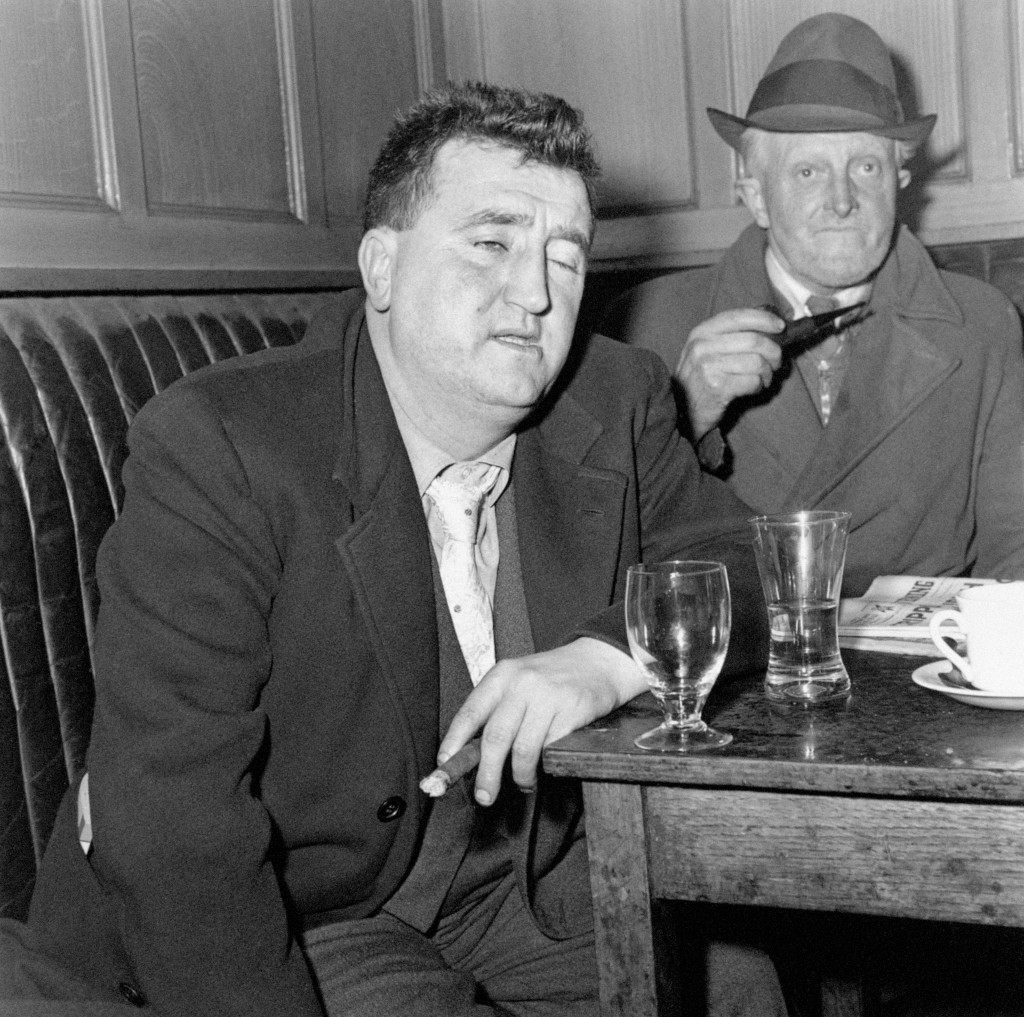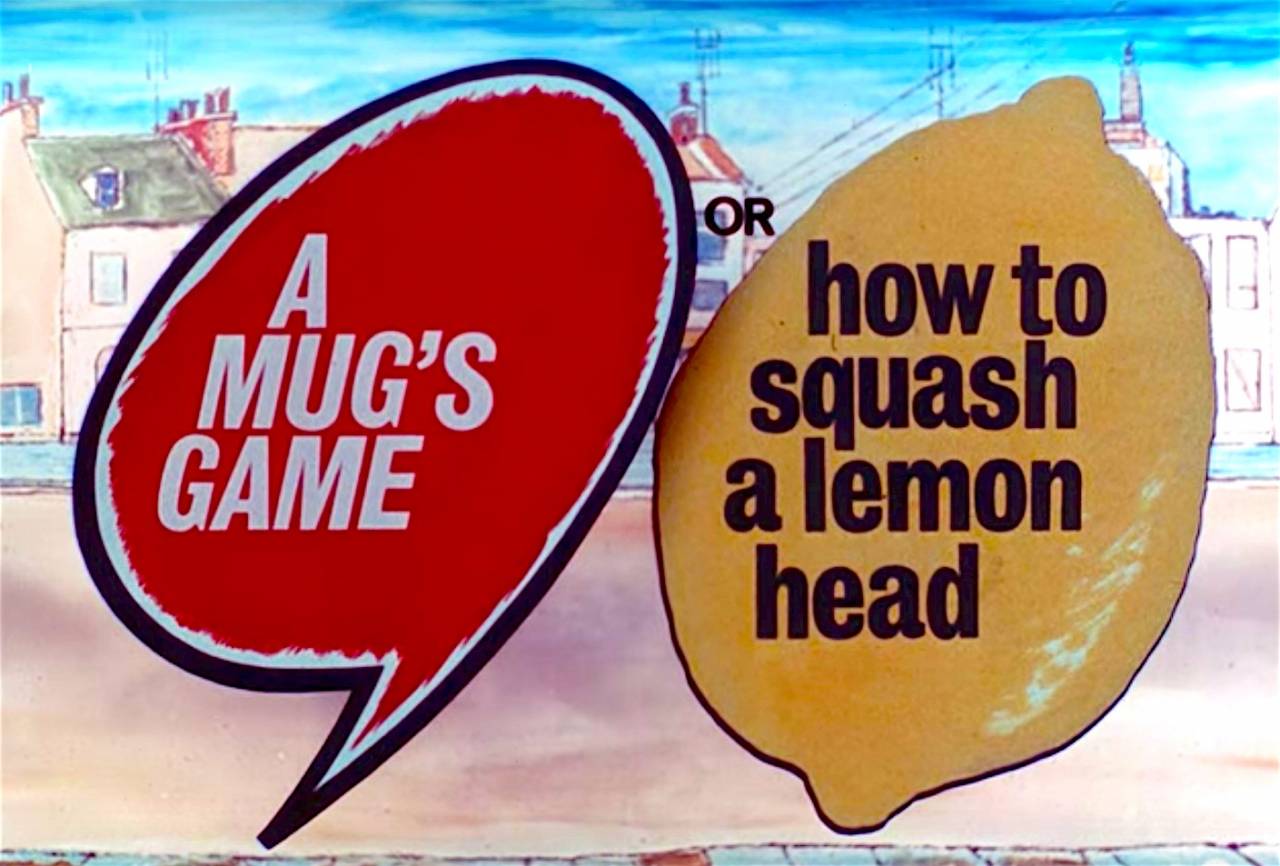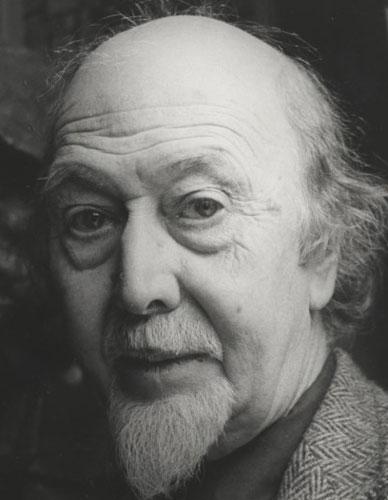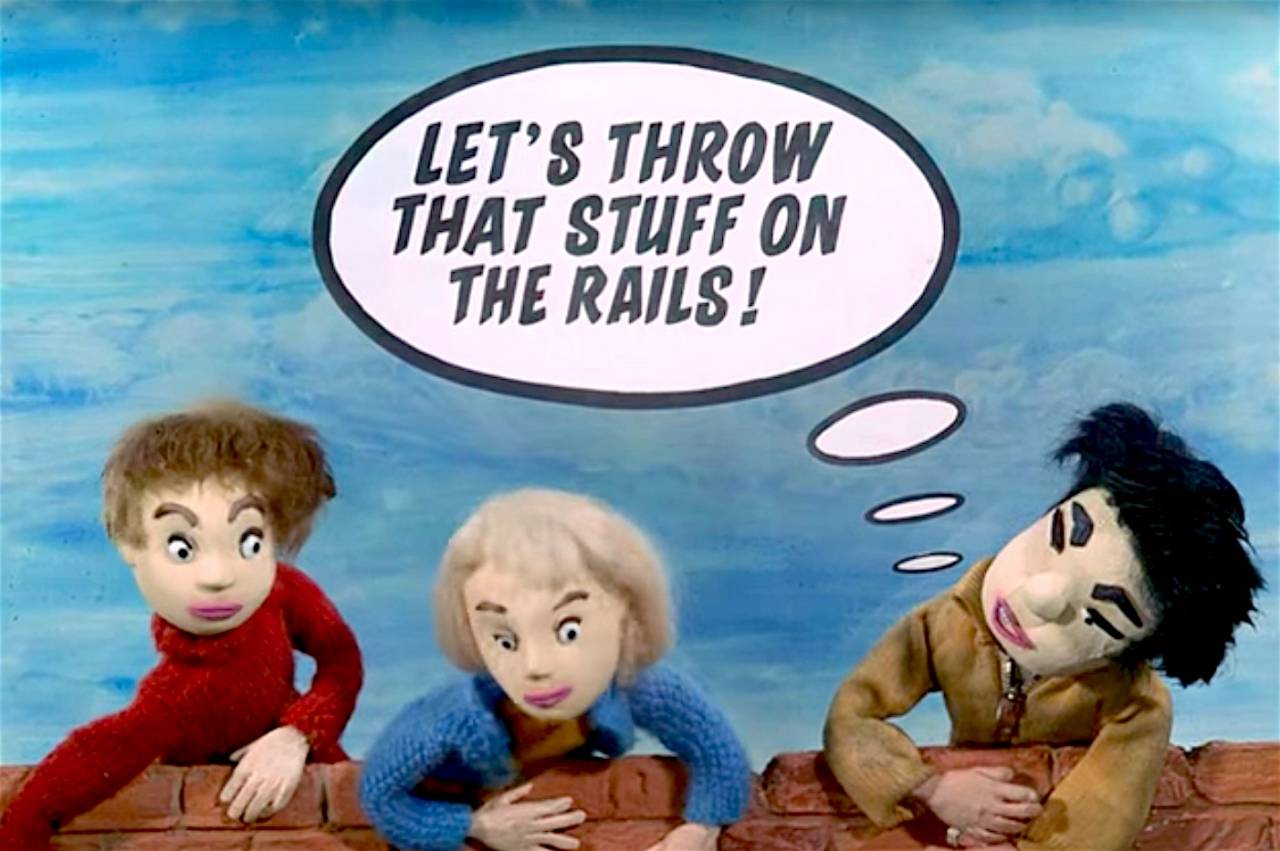A Mug’s Game OR How to Squash a Lemon Head (1967) comes with the message “Choose Life”. It’s a stop-motion railway safety film, featuring Yo-yo and Pogo being led into danger by the nominatively determined Splat.
A Mug’s Game OR How to Squash a Lemon Head was created by Desmond MacNamara (born Dublin 10 May 1918; died London 8 January 2008). A stalwart of Dublin’s Bohemian “Baggotonia” quarter, favoured haunt of such lively literary locals as Patrick Kavanagh, Flann O’Brien, Jack Yeats, Patrick Pye, Owen Walsh and John Behan, MacNamara would say of another of his friends, the Irish playwright Brendan Behan: “I tend to measure my friends by thinking of something I want to tell them. I say to myself, ‘I must tell so and so that’, and this was frequently the case with Brendan, and then I suddenly realise that I cannot, for they are no longer here . . . There is a very small number of such people, and Brendan was one of them.”

Irish playwright Brendan Behan, whose plays “The Quare Fellow” and “The Hostage” were enthusiastically received in London’s West End, enjoys a drink and a chat with his friend Michael Collins in Tom Moore’s Bar in Dublin, Ireland. Picture date:February 9, 1961.
MacNamara produced a bust of Behan. For years it sat on the mantlepiece at his London home. This Behan bust was part of a grander plan, as MacNamara told Logos.
Well, Brendan, who was a monstrous egotist or egoist or both, conceived the idea of having a statue of himself erected in St. Stephens Green. There were a number of grass bays around the perimeter of the north side of the Green, some of which contained statues, some of which didn’t. In some cases statues had been there originally which were blown up during the Troubles. It occurred to Brendan that if you erected a statue like that- how long would it be there before people noticed it hadn’t always been there? The idea came to him, I think, because I had just done a life-sized replica of a statue of Queen Victoria which originally sat in front of Leinster House. It was for the Annual Horse Show Review at the Gaiety Theatre. It was very uncomely…
The monument was quite handsome, baroque. But she, sitting in the middle of it, was rather uncomely. It was known as “Ireland’s revenge.” Anyway, I’d done this copy complete with dried pigeon and seagull shit. Very effective. And indeed when taken to the Gaiety Theatre in the back of a lorry was mistaken for the real thing. Brendan didn’t want his own name on the statue. He wanted a statue erected to Rabelais with Brendan’s head on it. This was to be set up on a plywood base treated to look like stone, with which I had some skill. He had even gone to the extent of persuading an engineer to design a retractable trolley so we could wheel the thing over, press a lever, so it would settle in the grass as if forever. I had to come, for various reasons, to London then and later he followed me over and we started to do it. The important thing was to get a portrait head of him from which the rest could be fabricated… He slept still. He fell asleep half way through, no, a quarter way through. I had to prop up his head with half a dozen books…
I didn’t go back to Dublin for sufficiently long to do it but the hoax could have been done. Our mutual theory was that it would take about three weeks before some gardener mowing the grass would bump into the base and discover it wasn’t granite.
Sticking with the literary thread, MacNamara was the inspiration for the character MacDoon in his friend JP Donleavy’s famous Dublin novel The Ginger Man: “Small dancing figure. It is said his eyes are like the crown jewels. A sharp red beard on his chin. A Leprauchaun for sure. Can’t speak too loudly to Mac, else he might blow away.”
MacNamara’s career began in a studio at 39 Grafton Street (well placed for lengthy and lively discussion at McDaid’s pub), where he made papier mâché sculptures and props for the Dublin’s Abbey and Gate theatres, and for the movie Henry V (1944), which was filmed in Ireland. In the early 1950s MacNamara made frequent trips to London. “I did a lot of toing and froing at that time,” he said. “I’d go for one or two months, then six months.” He married Skylla, who noted: “We were married in 1953 and Mac was thrilled to find that James Joyce had also married in the same Kensington Registry Office.”
MacNamara kept up with his Irish pals. “Brendan Behan stayed with us most times he was over,” he recalled. “I remember once having to bail him out of a West End police station. When I arrived, I found Brendan and all the police having a party around two crates of pale ale.”
Desmond MacNamara taught at London’s Marylebone Institute and Quintin Kynaston school in St John’s Wood, wrote definitive works on papier mache (New Art of Papier-Mache (1963)) and picture framing (Picture Framing: a practical guide from basic to Baroque, 1986), and the phantasmagoric Confessions of an Irish Werewolf.
Now let’s enjoy – and pay heed – A Mug’s Game Or How to Squash a Lemon Head:
Would you like to support Flashbak?
Please consider making a donation to our site. We don't want to rely on ads to bring you the best of visual culture. You can also support us by signing up to our Mailing List. And you can also follow us on Facebook, Instagram and Twitter. For great art and culture delivered to your door, visit our shop.











